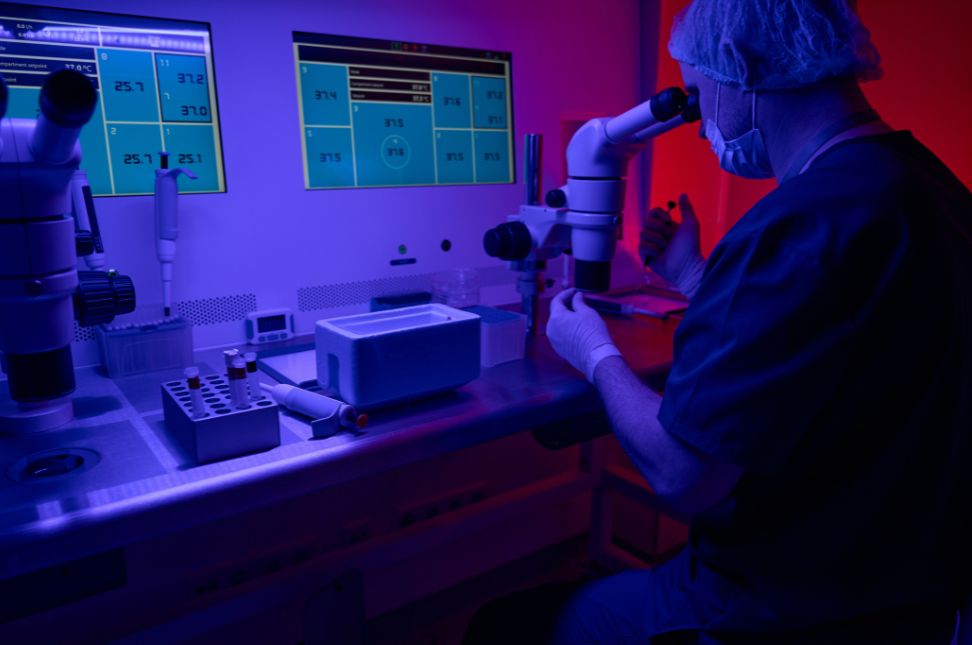Cryopreservation is a process where cells, tissues, or entire organs are preserved by cooling them to very low temperatures, typically using liquid nitrogen. This process halts all biological activity, including the biochemical reactions that lead to cell death, effectively putting the biological material in a state of suspended animation. In recent years, cryopreservation has gained significant attention not only in the fields of medicine and biology but also among individuals seeking to extend their lives or preserve their fertility for future use.
How Cryopreservation Works
The cryopreservation process involves several critical steps to ensure the integrity of the biological material. Initially, the cells or tissues are treated with cryoprotectants—special substances that prevent ice crystal formation, which can damage cell membranes during the freezing process. The material is then gradually cooled to sub-zero temperatures before being stored in liquid nitrogen at around -196°C (-321°F).
The key to successful cryopreservation is to prevent ice crystals from forming inside cells. Ice crystals can puncture cell membranes, leading to cell death. Cryoprotectants like dimethyl sulfoxide (DMSO) and glycerol help by replacing water in the cells and reducing the risk of ice formation. This meticulous process ensures that when the material is thawed, it can return to a functional state.
Applications of Cryopreservation
Cryopreservation has a wide range of applications, making it an essential tool in various scientific and medical fields:
- Fertility Preservation: One of the most common uses of cryopreservation is in fertility treatments. Individuals can preserve eggs, sperm, or embryos for future use. This is particularly beneficial for cancer patients who may undergo treatments that could affect their fertility. By freezing their reproductive cells, they have the option to start a family later in life.
- Stem Cell Preservation: Stem cells, which have the potential to develop into different types of cells, can also be cryopreserved. This is particularly useful in treating various blood and immune system disorders, where preserved stem cells can be thawed and used for transplantation.
- Organ Transplantation: Although still in experimental stages, cryopreservation of organs could revolutionize organ transplantation. Currently, organs have a very short shelf life once removed from a donor, but cryopreservation could extend this, making it easier to match donors with recipients and reducing the number of discarded organs.
- Biological Research: Cryopreservation allows researchers to store biological samples, such as cell cultures, tissues, and even whole organisms, for long periods without losing viability. This is crucial for research that requires consistent, long-term studies.
- Animal Conservation: In the field of animal conservation, cryopreservation is used to preserve the genetic material of endangered species. This could potentially help in future efforts to increase the genetic diversity of a population or even bring extinct species back to life.
Why Are People Opting for Cryopreservation?
The growing interest in cryopreservation is driven by various personal and scientific motivations.
- Life Extension: Some people are turning to cryopreservation with the hope of extending their lives beyond what is currently possible. The idea is that by preserving their bodies or brains at the moment of death, future advances in medical science might allow them to be revived and cured of whatever caused their demise. This concept, often associated with the term “cryonics,” is still highly controversial and speculative, but it continues to attract interest from those hoping to defy the limits of current medical science.
- Fertility Preservation: As mentioned earlier, cryopreservation offers individuals the ability to delay parenthood. Women, in particular, are using egg freezing to ensure they have viable eggs available later in life when they are ready to have children. This option is also appealing to those who face medical treatments that could compromise their fertility.
- Medical Emergencies: In some experimental cases, cryopreservation has been used in emergency situations, such as severe trauma or cardiac arrest, where patients’ bodies are cooled to reduce metabolic demands and prevent brain damage. While this is not the same as long-term cryopreservation, it reflects the broader potential of temperature control in life-saving procedures.
- Ethical and Philosophical Considerations: Some individuals are motivated by the ethical and philosophical implications of cryopreservation. The idea of potentially overcoming death, preserving one’s consciousness, or contributing to future scientific breakthroughs can be compelling for those interested in the possibilities of future technologies.
Challenges and Ethical Considerations
While cryopreservation offers remarkable possibilities, it is not without challenges and ethical concerns. The primary challenge is ensuring that biological material remains viable after being thawed. While many cells and tissues can be successfully preserved and revived, the process is not yet reliable for complex organs or whole organisms.
Ethical questions also arise, particularly around cryonics and the idea of reviving deceased individuals. The uncertainty about whether future technologies will ever be able to restore these individuals to life makes it a highly debated practice. Additionally, the costs associated with cryopreservation can be prohibitive, raising concerns about accessibility and equity.
Conclusion
Cryopreservation represents a fascinating intersection of science, medicine, and ethics. From fertility preservation to the speculative hope of life extension, the reasons why people are opting for cryopreservation are as diverse as the applications themselves. While there are significant challenges to overcome, the ongoing advancements in this field suggest that cryopreservation will continue to play an increasingly important role in our future. Whether driven by personal hope or scientific pursuit, the practice of cryopreservation offers a glimpse into the future of medicine and biology.




